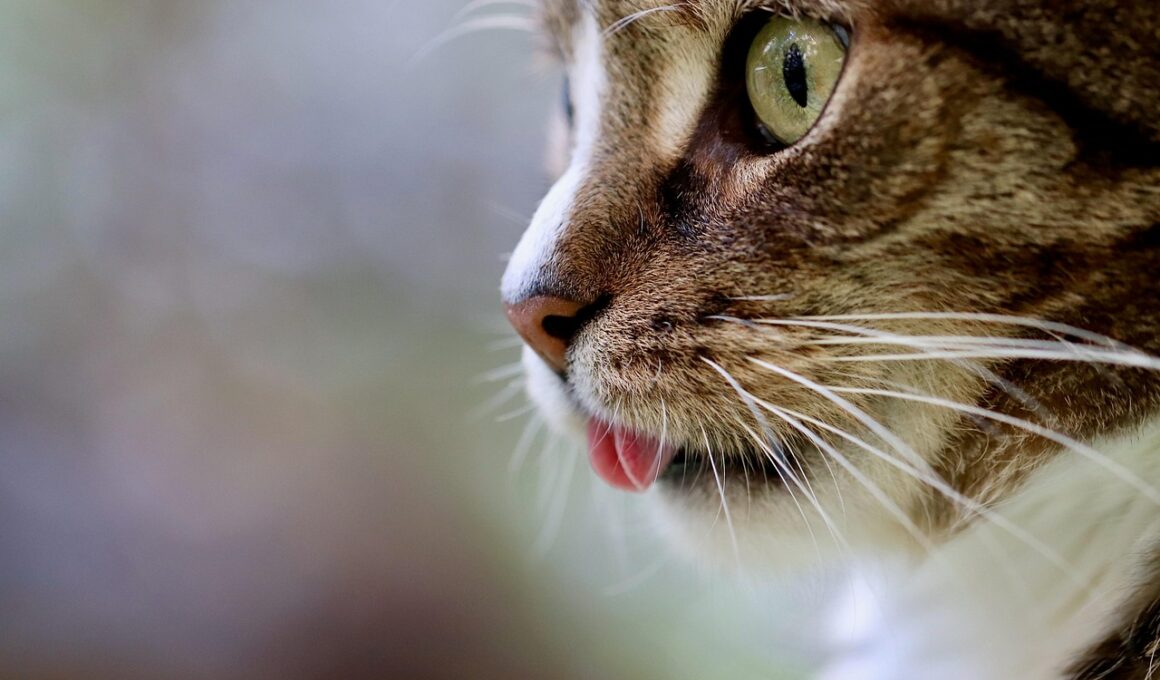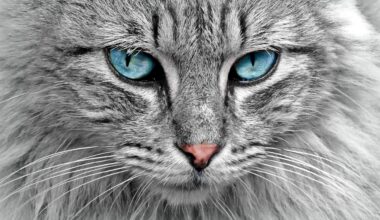Behavioral Standards for Cats in Competitions
When participating in cat shows, it is vital for owners to understand the behavioral standards expected from their cats. These expectations ensure that competitions run smoothly and provide a comfortable environment for all participants, both feline and human. Cats should be well-groomed and free from parasites, ensuring their fur, claws, and teeth are attended to. Additionally, they must be socialized, comfortable with people, and accepting of handling by judges. Cats not showing good behaviors can lead to their disqualification, as judges evaluate them on temperament and demeanor as much as their physical qualities. A strong bond between the cat and handler further encourages positive behavior; thus, practicing together is crucial before the event. Show day practices include acclimating your cat to the show environment, where they should remain calm when presented to judges and fellow competitors. Ensuring your cat understands commands, responds positively, and tolerates being held enhances their chances during evaluations. Every cat owner strives for excellence, creating a delightful experience for attendees, making behavioral standards not just rules, but essential guidelines for a successful and enjoyable competition.
Beyond grooming and socialization, it’s essential to recognize how stress can affect a cat’s behavior during competitions. Cats are often sensitive to new environments, and the hustle and bustle of a cat show may overwhelm them. Before the day of the show, consider introducing your pet to various people and situations that mimic the competitive atmosphere. This preparation can partially alleviate anxiety and promote calmness during their time in the show ring. Moreover, bringing familiar items, such as toys or blankets, can provide comfort to your cat, helping them feel secure amidst the unfamiliar surroundings. If your cat shows signs of extreme stress, such as excessive vocalization or attempts to escape, take a moment to soothe them. Techniques such as gentle petting or quiet breaks away from the competition space may improve their composure. Furthermore, nutritional considerations should not be overlooked. Ensure that your cat consumes balanced meals and stays hydrated before their big day. This attention to diet plays a significant role in maintaining energy and overall well-being, contributing to their overall performance in the show.
Respecting Environment and Other Competitors
Maintaining respect for the environment and other competitors is fundamental during cat shows. Owners should ensure that their cats do not behave aggressively towards others. This includes refraining from altercations with other cats and understanding that some felines may be more territorial than others. Prepare your cat by exposing them to various personalities and breeds before competition day, as this can help them feel more comfortable. Additionally, maintaining control of your cat at all times is critical; using a secure carrier during transport and in the venue reduces stress for both the cat and the owner. During competitions, keeping your cat on a leash or inside a carrier can prevent accidental escapes or confrontations with other felines. To minimize distractions, be mindful of noise levels and avoid excessive excitement, which can be disruptive. Ultimately, showing respect involves acknowledging each participant’s efforts, understanding that competition can be challenging for all involved. Displaying good sportsmanship may include congratulating other cats and their owners, fostering a community of support and admiration amongst all participants.
Another vital aspect of behavioral standards in cat shows relates to communication between cat and handler. Effective communication aids in presenting the cat’s best side to judges; this includes using commands and gestures that the cat has recounted during training sessions. Fostering a strong relationship transforms handling routines into enjoyable experiences for both parties, which can influence the cat’s performance on the show floor. Prompt and gentle corrections during training are essential; they allow the feline to understand that acceptable behavior is rewarded while undesirable actions can lead to a negative outcome. Additionally, not every cat is comfortable being held or examined; therefore, handlers must pay close attention to their feline’s cues and adapt their techniques accordingly. Ensuring your cat receives plenty of affectionate attention helps build trust and reduces anxiety while under evaluation. Positive reinforcement is key during training sessions; affirming good behavior with treats or praise fosters confidence. In this sense, handling skills extend beyond physical capabilities, emphasizing the bond and trust built through consistent interactions and preparation leading to the event.
Understanding the Judge’s Role
Understanding the judge’s role in competitions is integral to knowing what behavioral standards they evaluate. Judges assess not only the physical attributes of each cat but also evaluate their behavior and temperament. As a result, it’s crucial for owners to understand how their cat should behave during various stages of the competition. Initially, the judge may evaluate the cat while it stands in its cage. During this time, owners should ensure their cats remain calm and composed, exhibiting curiosity rather than fear or aggression. When being assessed in-hand, the cat should display sociability, allowing judges to touch and inspect without displaying signs of distress. Furthermore, some judges may prefer more active displays; therefore, allowing cats to engage while on the surface is beneficial as well. Whether sitting calmly or playfully moving about, cats must reflect positive behaviors. Owners should remember that judges are looking for overall presence; thus, those calm moments that convey confidence are equally important to flawlessly grooming standards. By adapting approaches to suit the judges’ expectations, owners can improve their cats’ show performance.
Throughout the cat show experience, maintaining a positive mindset is essential for both the cat and owner. Exhibiting calmness during the event can significantly influence a cat’s behavior, making a supportive atmosphere vital for success. Leading up to the event, owners should reinforce training routines, ensuring that their cats are prepared for every aspect of the competition. Fostering an environment of positivity also means celebrating small wins, including how well your cat adapts to being in public. Even beyond preparation, once at the competition, encouraging comments and encouragement can uplift both owner and cat, enhancing their experience. Learning to cope with challenges, such as a difficult judge or a crowded arena, showcases resilience, which can positively reflect in their demeanor. Likewise, if challenges arise during the competition, the focus should remain on the joy of participating rather than directly competing with others. This perspective creates a friendly environment for each contestant, emphasizing the beauty of cats rather than simply the competition. In doing so, cat shows transform into cherished experiences that celebrate the unique personalities and ties between each cat and its owner.
The Impact of Preparation on Success
Preparation is paramount when it comes to behavioral standards and the overall success of cat shows. From grooming to socialization, every detail matters when it comes to how the feline performs in a competitive environment. A well-prepared cat exudes confidence, and this significantly influences how judges perceive them. Owners should remember that early socialization cannot be overstated; presenting your cat to various situations early on ensures that they are familiarized with different environments. Equally, honing basic commands and practicing handling techniques prior to the event instills exhibits expected behavior. By integrating these routines, owners increase their cat’s chances of standing out in the competition. Observing trends and patterns from previous shows can also provide insights on what judges prefer, adapting your presentation style accordingly. Lastly, reflecting on shows can help identify key areas for improvement; participating in as many shows as possible can enhance both the cat’s and owner’s experience. Emphasizing continual growth and learning can transform practices into effective procedures, ensuring that every cat show evolves into a tailored experience based on behavioral standards and individual strengths.


